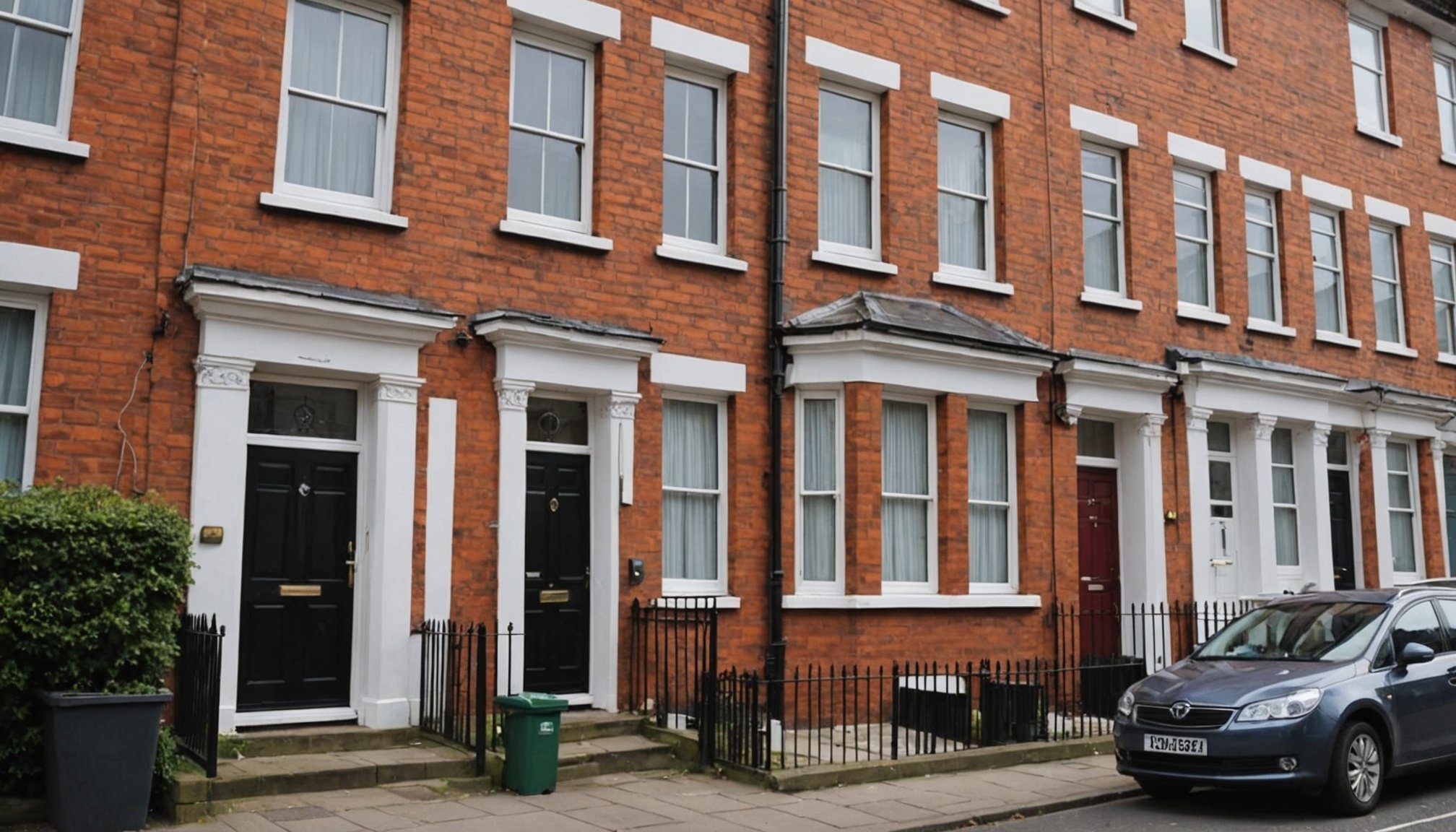Understanding Tenancy Disputes
Exploring the realm of tenancy disputes reveals a mix of common causes and preventive strategies. Both UK landlords and tenants may face conflicts over issues such as rent payments, property damage, and maintenance duties. These disputes often stem from differing interpretations of tenancy agreements.
A crucial tool in avoiding or resolving tenancy disputes is maintaining thorough documentation. Landlords and tenants should meticulously document conditions of the rental property, payment histories, and any communications exchanged. Clear communication comes hand-in-hand with excellent record-keeping, serving as a preventive measure against misunderstandings and building a foundation for amicable resolutions.
Also read : Top Strategies for Restoring Historical Properties in Canterbury: A Complete Guide
When assessing the severity of a tenancy dispute, it is imperative to evaluate the financial implications and the emotional impact on both parties. A minor disagreement, like a delayed payment resolved within days, might not necessitate external intervention. However, recurring issues such as continual property neglect or persistent rent arrears might prompt more formal conflict resolution steps or legal advice.
By understanding the root causes and impacts of tenancy disputes, UK landlords and tenants can better navigate conflicts. Engaging in open communication and respecting each party’s rights leads to more positive outcomes and retains healthy landlord-tenant relationships.
Additional reading : Key Factors to Consider When Installing EV Charging Stations in Multi-Unit Residences
Legal Framework for Tenancy Disputes
Understanding the UK tenancy law is crucial for both landlords and tenants to ensure fair and legally compliant rental agreements. This section delves into the legal obligations and rights that govern these agreements.
Overview of the Housing Act
The Housing Act serves as the backbone of UK tenancy law, outlining the fundamental rights of landlords and tenants. It covers various aspects of tenancy agreements, including security of tenure, eviction rules, and property maintenance obligations. By adhering to the Housing Act, parties can minimise disputes and enhance their understanding of legal responsibilities.
Important Legal Obligations for Landlords
Landlords have a set of legal obligations they must fulfil. This includes ensuring the property is safe and in good repair, protecting tenant deposits with a recognised scheme, and providing notices for rent changes or termination. Compliance with these requirements supports a harmonious landlord-tenant relationship.
Tenant Rights and Responsibilities
Tenants, on the other hand, are entitled to live in a well-maintained property, possess clarity on rent charges, and equitable eviction processes. Responsibilities include paying rent on time, maintaining the property, and respecting the landlord’s property. Meeting these standards ensures tenants remain in good standing and sustain their living environment.
By equipping themselves with knowledge about their rights and obligations, both parties are better prepared to handle tenancy disputes amicably.
Effective Communication Strategies
Effective communication is critical in fostering positive tenant relations and ensuring harmony within rental properties. It starts with employing thoughtful communication techniques to facilitate open dialogue. This involves actively listening to tenant concerns, acknowledging their perspectives, and responding empathetically. Creating an environment where tenants feel heard can significantly reduce misunderstandings and build trust.
Establishing clear expectations from the outset is another cornerstone of maintaining healthy tenant relations. Clearly outlining rules and responsibilities within the lease agreement, and reviewing these in an introductory meeting, sets a solid foundation for mutual understanding. This proactive approach prevents potential disputes, reinforcing the importance of communication in relations.
Handling difficult conversations is an inevitable aspect of property management. Focusing on conflict management, it is crucial to approach these interactions with professionalism and respect. Establishing a calm tone, staying solution-focused, and avoiding confrontational language can de-escalate tense situations. Additionally, maintaining documentation of these interactions can provide clarity and protection against any claims.
In summary, effective communication techniques serve as the backbone for managing tenant relationships. By fostering open dialogue, setting clear expectations, and managing conflicts with professionalism, property managers can ensure a cooperative and positive living environment. These strategies prove indispensable for promoting tenant satisfaction and minimizing disputes within rental properties.
Negotiation Techniques for Landlords
Navigating negotiations as a landlord requires skill and understanding to foster positive tenant relationships.
Preparing for negotiations
Preparation is the cornerstone of effective negotiation tactics. Before discussions begin, gather all relevant information about the lease and potential issues. Assess tenant agreements to identify negotiation points. Understanding tenant behavior and needs is crucial for successful interaction, as it allows the landlord to anticipate demands and formulate effective responses. Equipping yourself with data on market conditions and comparable rental rates strengthens your position, making resolutions more amicable and informed.
Finding common ground and compromise
Resolving disputes hinges on the ability to find common ground. During negotiations, active listening is paramount, as it demonstrates respect and attentiveness to tenant concerns, contributing to the identification of mutual interests. When disagreements arise, focus on compromise rather than confrontation. Propose solutions that address both parties’ concerns, fostering a cooperative environment. This approach not only resolves conflicts but also enhances landlord-tenant relationships, ensuring long-term satisfaction and retention.
Documenting the negotiation outcome
Once an agreement is reached, it is essential to document the terms meticulously. Clear and concise documentation prevents future misunderstandings and serves as a reference point for both landlords and tenants. Ensure that all tenant agreements, amendments, or special conditions are recorded accurately. This transparency is vital for maintaining accountability and sustaining a harmonious relationship, setting the stage for future negotiations.
Utilizing Mediation and Arbitration
Navigating conflicts can often be a daunting task, but mediation services provide an accessible path to resolution. Engaging in a professional mediation process allows conflicting parties to communicate openly under the guidance of a third party. The benefits of professional mediation are many, including the preservation of relationships, confidentiality, and often lower costs compared to litigation.
Choosing the right mediator or arbitrator is vital. Look for individuals with relevant experience and accreditation, someone neutral who can steer a balanced discussion. Additionally, understanding the specific skills of a mediator in relevant fields can aid in achieving a satisfactory outcome. It’s advisable to seek recommendations or consult organizations that oversee these professionals.
The mediation process unfolds in several steps. Initially, both parties agree on using mediation services. Next, they attend mediation sessions where the mediator sets rules and facilitates dialogue. The goal is to enable parties to reach a mutually agreeable solution through open communication and negotiation, fostering a cooperative atmosphere. This step-by-step approach not only clarifies misunderstandings but also can significantly shorten dispute resolution times.
Incorporating arbitration as an alternative, when necessary, brings another layer to the dispute resolution toolkit and can lead to binding agreements, offering certainty in outcomes.
Alternative Dispute Resolution (ADR) Options
Navigating conflicts can be challenging, but dispute resolution options provide efficient pathways outside traditional court routes. Let’s explore how ADR for landlords and tenants presents viable solutions.
Types of ADR Available in the UK
Various ADR mechanisms are available in the UK, tailoring to the needs of landlords and tenants. Mediation involves a neutral third party aiding discussions. This tenant mediation can resolve issues amicably by fostering understanding. Arbitration provides legal binding resolutions, whereas conciliation is more informal, offering suggestions to resolve disputes. Legal experts often recommend choosing the ADR type that aligns with the complexity of the dispute.
Preparing for an ADR Session
Effective preparation is crucial for ADR success. Both parties should gather all relevant documents, including contracts, correspondence, and evidence of previous interactions. Clarifying the core issues and desired outcomes can enhance the focus during proceedings. If tenant mediation is chosen, coming with an open mindset and willingness to understand the opposing viewpoint can significantly impact the resolution process.
Successful Case Studies of ADR in Tenancy Disputes
Numerous cases in the UK highlight the success of ADR in tenant disputes. In one instance, landlord-tenant mediation resolved a disagreement over property damage, saving both parties time and court fees. Such examples demonstrate how ADR for landlords and tenants can efficiently settle disputes, fostering better relationships and solutions tailored to the unique dynamics of the conflict.
When to Seek Legal Action
Understanding when to initiate legal action is crucial for landlords navigating the complex eviction process. If a tenant consistently fails to pay rent or breaches the lease agreement despite numerous warnings, it may be time to consider taking the matter to court. Court proceedings should be viewed as a last resort option, pursued when other efforts to resolve the issue amicably have been exhausted.
Navigating the eviction process legally requires compliance with local laws and regulations. The court process typically begins with the landlord filing a complaint, followed by the tenant receiving a summons. The legal proceedings involve presenting evidence and potentially attending a hearing. Here, both landlord and tenant have the opportunity to argue their case before a judge.
Legal action can result in several outcomes and implications. On one hand, the court can rule in favour of the landlord, granting the right to regain possession of the property. Alternatively, they might rule in favour of the tenant, especially if procedural errors are found in the landlord’s approach. Thus, understanding the nuances of the court system is essential. Seeking legal counsel may ensure the process is conducted properly, ultimately protecting the landlord’s interests.
Preventative Measures for Future Disputes
In the world of property management, minimising disagreements between landlords and tenants is key. A proactive approach can save both parties from future disputes and ensure a harmonious living environment.
Best Practices for Tenant Screening
Conducting a thorough tenant screening is fundamental in preventing conflicts. Begin by checking prospective tenants’ rental history and credit score to ensure they are reliable. Emphasising communication during this process can set the tone for the relationship. By understanding a tenant’s ability to meet lease obligations, you reduce the risk of future issues.
Drafting Effective Lease Agreements
A clear, well-drafted lease agreement is an essential tool in dispute prevention. This document should detail responsibilities and rights, include maintenance protocols, and cover payment terms. It’s important to specify circumstances under which disputes will be resolved. This adds certainty for both parties, decreasing the likelihood of misinterpretations.
Regular Check-ins and Maintenance Practices
Scheduling regular check-ins not only improves tenant relations but also allows for early identification of potential problems. Inspecting the property as part of routine maintenance practices helps in addressing issues such as wear and tear or damage before they escalate. Encouraging tenants to report problems promptly and maintaining open lines of communication can significantly decrease the chances of disputes arising.
Resources for Landlords
As a landlord, accessing comprehensive resources is crucial for successfully managing and maintaining rental properties. One of the key areas where landlords often require assistance is obtaining legal help. There are several useful legal resources and websites available that offer guidance on landlord-tenant law and property management. The Residential Landlords Association (RLA) and Landlord Law Services provide valuable insights on compliance, rights, and obligations.
Beyond online resources, there are agencies dedicated to providing tenancy support and landlord resources. The National Landlord Association (NLA) and local authorities frequently offer advice and services to help landlords navigate complex situations, from rent arrears to disputes over property maintenance.
For landlords keen on expanding their knowledge, recommended reading and courses can be game-changers. Books like “The Book on Managing Rental Properties” by Brandon Turner offer practical advice, while courses from property investment firms provide in-depth learning on investment strategy and tenant relationship management.
Investing time in these resources not only enhances a landlord’s capabilities but also ensures they remain compliant with evolving legal requirements. Accessing this wide array of landlord resources is an empowering way to improve a property portfolio’s management and drive rental success.











